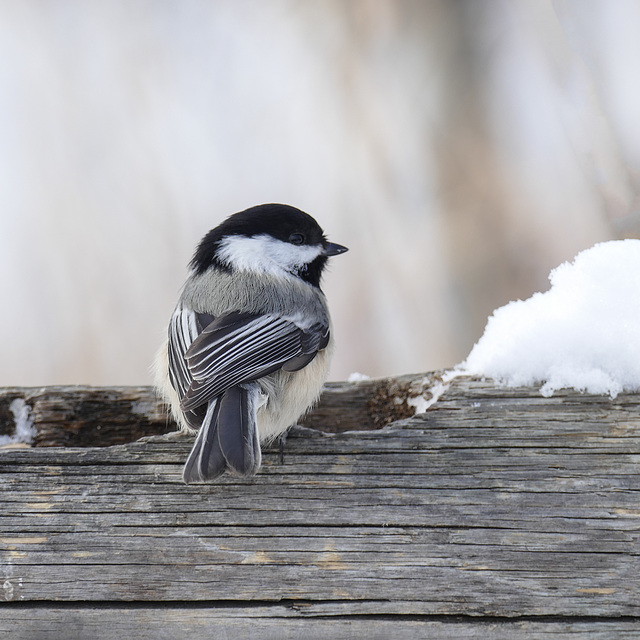Purple Honeycreeper male, Trinidad
Sharp-tailed Grouse
Old barns in the foothills
Yellow Oriole / Icterus nigrogularis, Trinidad
Sunset at Caroni Swamp, Trinidad
Great Blue Heron and Egret, Trinidad
Great Kiskadee / Pitangus sulphuratus, Trinidad
What is this?
Rusty and abandoned
Who am I?
Cute little thing
Sunset at the Caroni Swamp, Trinidad
White-necked Jacobin, Asa Wright, Trinidad
Winter's beauty
Scarlet Ibis and Egrets, Caroni Swamp
A mix of colours, Trinidad
Plain, but welcome
A view from yesterday
A friendly moment
Little Blue Heron, Caroni Swamp, Trinidad
Scarlet Ibis, Caroni Swamp, Trinidad
Final photo from Caroni Swamp, Trinidad
Early morning Orange-winged Parrots, Trinidad
Deer on the horizon
A lucky Moose day
Sharp-tailed Grouse
A white world
Watching Scarlet Ibis at Caroni Swamp, Trinidad
Scarlet Ibis - like decorations on a Christmas tre…
Bat sp., Caroni Swamp, Trinidad
Scarlet Ibis, Caroni Swamp, Trinidad
Evening light at Caroni Swamp, Trinidad
Little Blue Heron / Egretta caerulea, Caroni Swamp…
Masked Cardinal / Paroaria nigrogenis, Trinidad
Meerkat from the archives
Country scene in winter
Ring-billed Gull
Better late than never
Great Kiskadee, Asa Wright, Trinidad
Whites and blues of winter
Torch Ginger, deep in the shadows
Red barn in winter
The beauty of winter
Rainforest of the Arima Valley, Trinidad
Lacy curtain of ice
See also...
See more...Keywords
Authorizations, license
-
Visible by: Everyone -
All rights reserved
-
246 visits
The ever-present Black-capped Chickadee


This was more or less the only photo I ended up with after a long walk in South Glenmore Park yesterday afternoon, 18 February 2018. It was so cold and a slight wind made the windchill plunge. However, a handful of us braved the weather and managed to find at least several species of bird. This little Black-capped Chickadee was one of several, feeding on Sunflower seeds. These little Chickadees are just 24 hours away from death, and need to collect enough fat in order to survive. Such busy little birds.
This is not my favourite walk, partly because it is so long, but I needed the exercise and I wanted to spend time with my friends. Some of us went for coffee afterwards - and a bowl of special Mac & Cheese was especially welcome after being out in the cold for so long.
"The Black-capped Chickadee is notable for its capacity to lower its body temperature during cold winter nights, its good spatial memory to relocate the caches where it stores food, and its boldness near humans (they can feed from the hand)." From Wikipedia.
en.wikipedia.org/wiki/Black-capped_Chickadee
www.allaboutbirds.org/guide/black-capped_chickadee/id
"The chickadee's unerring spatial memory is remarkable enough, says Colin Saldanha, assistant professor of biological sciences at Lehigh University and an anatomist who has studied songbirds for six years.
But it is what happens inside the tiny songbird's brain that Saldanha finds amazing. In the fall, as the chickadee is gathering and storing seeds, Saldanha says, its hippocampus, the part of the brain responsible for spatial organization and memory in many vertebrates, expands in volume by approximately 30 percent by adding new nerve cells. In songbirds, the hippocampus is located on the dorsal surface of the forebrain right beneath the skull. In mammals, the hippocampus is located beneath the cortex.
In the spring, when its feats of memory are needed less, the chickadee's hippocampus shrinks back to its normal size, Saldanha says." From article on ScienceDaily.
www.sciencedaily.com/releases/2003/09/030912072156.htm
This is not my favourite walk, partly because it is so long, but I needed the exercise and I wanted to spend time with my friends. Some of us went for coffee afterwards - and a bowl of special Mac & Cheese was especially welcome after being out in the cold for so long.
"The Black-capped Chickadee is notable for its capacity to lower its body temperature during cold winter nights, its good spatial memory to relocate the caches where it stores food, and its boldness near humans (they can feed from the hand)." From Wikipedia.
en.wikipedia.org/wiki/Black-capped_Chickadee
www.allaboutbirds.org/guide/black-capped_chickadee/id
"The chickadee's unerring spatial memory is remarkable enough, says Colin Saldanha, assistant professor of biological sciences at Lehigh University and an anatomist who has studied songbirds for six years.
But it is what happens inside the tiny songbird's brain that Saldanha finds amazing. In the fall, as the chickadee is gathering and storing seeds, Saldanha says, its hippocampus, the part of the brain responsible for spatial organization and memory in many vertebrates, expands in volume by approximately 30 percent by adding new nerve cells. In songbirds, the hippocampus is located on the dorsal surface of the forebrain right beneath the skull. In mammals, the hippocampus is located beneath the cortex.
In the spring, when its feats of memory are needed less, the chickadee's hippocampus shrinks back to its normal size, Saldanha says." From article on ScienceDaily.
www.sciencedaily.com/releases/2003/09/030912072156.htm
ROL/Photo has particularly liked this photo
- Keyboard shortcuts:
Jump to top
RSS feed- Latest comments - Subscribe to the comment feeds of this photo
- ipernity © 2007-2024
- Help & Contact
|
Club news
|
About ipernity
|
History |
ipernity Club & Prices |
Guide of good conduct
Donate | Group guidelines | Privacy policy | Terms of use | Statutes | In memoria -
Facebook
Twitter

Sign-in to write a comment.